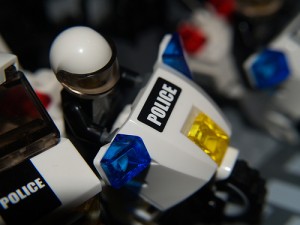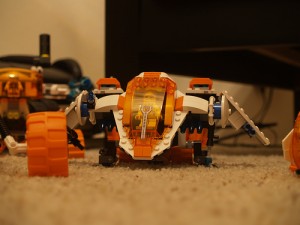Licensed themes have their own dead weight, which is the universe they come from. Harry Potter or Star Wars or Batman may all be cool in their LEGO incarnations (and in fact, one of the coolest video games ever made was the double license LEGO Star Wars), but it's difficult to add to that universe with your own builds.
But the space themes I grew up with: Space Police II, Spyrius, Exploriens, Magnetron, Blacktron II, Ice Planet, and so on, don't suffer from any of those limitations. You can build anything you want, and the universe is so ill defined that anything you build fits in it.
But recently, LEGO City has been drawing me in. It started with the shipping port. A container ship, a crane, and a little truck… it doesn't sound particularly inspiring, but it was all very cool. The truck, especially, which was a tiny part of the model, was very cool. From there, I continued the transport theme by building the Airport, which has a little commuter plane. And since then I have built a fire station, a police station, a hospital, and a gas station, a tiny little part of LEGO City that would represent, what? A bayside regional airport, close to a small shipping port, that happens to be located close to the major services of the town? I suppose it doesn't hold up particularly well, but it was all enjoyable.
I don't know when LEGO added motorcycles like the one above, but I'm pretty fond of them. Cars still don't look particularly realistic, which is a scaling problem, but trucks–if you like boxy cab-over-engine designs–look pretty good in LEGO scale. At home in my town are two firetrucks, a cement mixer, a garbage truck, the little container truck that came with the port, and an ambulance, all with more or less the same clever front grill.
I'll be watching the set additions in the coming months, looking to improve my LEGO city, because it looks like the strongest theme going right now. It's only a shame that I can't really add much from my own collection, having stayed away for years from wheeled vehicles in favor of space ships.






